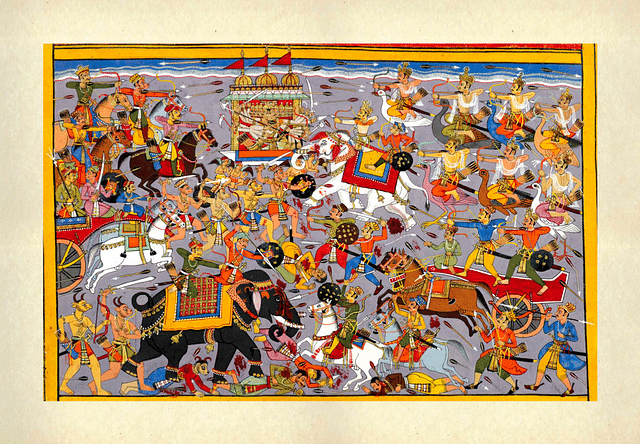
The Ramayana Of Mewar: Achievement Of Art, Treasure Of History
Excerpts from the retelling of the Ramayana, published by Roli Books, through a collection of paintings taken from the Mewar Ramayana
One of the most-loved and popular epics of India, the story of Ramayana was first told in the Sanskrit epic poem of Valmiki. Since then it has been told and retold for centuries through many cultures and languages in India and beyond. One of the most beautiful illuminated retelling of the legend has been the seven illustrated manuscripts prepared for Maharana Jagat Singh, the ruler of Mewar (r. 1649–52). The story held a special significance for the Mewar family as the Sisodiya Rajputs considered Rama among their direct ancestors in the Solar Dynasty, hence its preparation was a great act of family devotion. The huge scale of the project, with over 400 paintings, allowed the artists to focus on telling the epic story on the grandest level. Created between 1649 and 1653, through close collaboration among teams of painters and a single scribe copying the text, this is one of the finest works ever commissioned by a Hindu ruler.
Most volumes of the manuscript are now in the British Library. Other parts have remained in India, held today in three separate institutions – the Rajasthan Oriental Research Institute in Jodhpur; Chhatrapati Shivaji Maharaj Vastu Sangrahalaya in Mumbai; Baroda Museum – and one private collection. It is interesting how the manuscripts reached from Mewar to the British Library. Maharana Bhim Singh of Mewar had presented some volumes to East India Company’s agent Captain James Tod in 1820, who further presented it to the Duke of Sussex in 1823. The Duke had accumulated a vast library, and it was during the sale of this library in 1844 that the volumes were purchased for the British Museum. These were passed into the care of the British Library on its creation in 1973.
The book titled Ramayana, published by Roli Books, narrates the story of Ramayana through a collection of paintings taken from the Mewar Ramayana. Based on Valmiki’s text, the story is retold by the well-known author Sumedha V. Ojha, and begins with an Introduction by J.P. Losty, renowned scholar of Indian art and former Curator-in-charge of the extensive Indian visual collections at the British Library in London.
Here is what Sumedha V. Ojha herself had to say about the Mewar Ramayana:
“I had, of course , been aware of the story of the Mewar Ramayan and its digital re-unification by the British Library and had seen the version on the BL website before the collaboration for this book began.
The paintings were a great draw but for the reader of ancient Sanskrit texts that I am, the text was an even greater attraction. As you would know the Rana of Mewar had the Valmiki Ramayan illustrated; and this Ramayan is the adi kavya, the shrot or sourceof all the Ram Kathas that follow. Its importance can hardly be exaggerated.
The text has been written in Sanskrit in Devnagarai script. Before the introduction of printing in India in the 16th century Sanskrit was written in local scripts and this is therefore one of the oldest texts transliterated from different sources in different scripts into Devnagari. There are differences depending on where the scribe Hiranandji was copying from at the time he was putting down each Kand. It follows mainly the Northern rescension of the Valmiki Ramayan but has glimpses of the Northwestern and Northeastern rescensions as well. There are reflections of the versions in the Sarda script of Kashmir as well as some specificities with the Bengali and Nevari versions which makes it a fascinating document in its own right and a source of great interest for someone who studies the Ramayan in its different versions as I do. To put it in perspective, the other great work of cultural impact in Northern India the Ramcharitamanas of Goswami Tulsidas was written in 1631; in 1649, Rana Jagat Singh took up the task of illustrating the ancient Valmiki Ramayan and not the currently popular ones. This gives us a glimpse of the seminal position held by the Valmiki Ramayan across the ages.”
Given below are few chosen scenes from the Mewar Ramayana:
You can buy the book here.